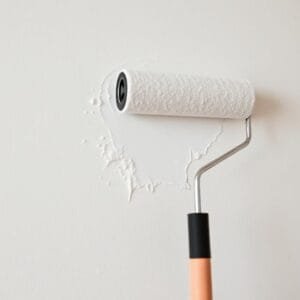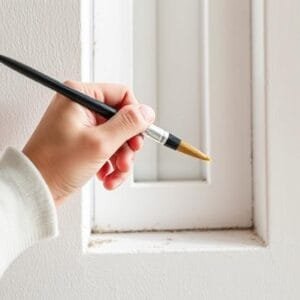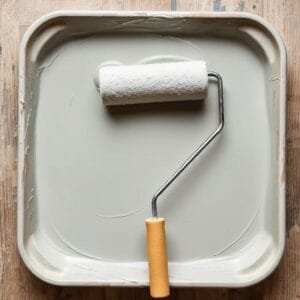Choosing between rollers and brushes for painting? Discover the pros, cons, and best uses of paint rollers vs brushes to make the right choice for walls, furniture, and more.
Painting your home, whether it’s a fresh coat on the walls or a touch-up on the furniture, demands the right tools. One of the most common dilemmas homeowners and DIY enthusiasts face is: Rollers vs Brushes – what works better?
Both rollers and brushes are essential painting tools, but they serve different purposes and yield different results. In this blog, we’ll break down the strengths and limitations of each, helping you decide which one suits your project best.
Understanding the Basics: What Are Rollers and Brushes Used For?
Paint Rollers are ideal for covering large, flat surfaces quickly and evenly. They’re most often used for walls, ceilings, and large furniture surfaces.
Paint Brushes offer precision and control. They’re best for edges, trims, corners, and detailed work.
Advantages of Paint Rollers
1. Faster Coverage
Paint rollers are excellent for large areas. They hold more paint than brushes, allowing you to cover wide spaces like walls or ceilings in less time.
2. Smooth Finish
Rollers, especially foam or microfiber rollers, help achieve a smooth and even coat with fewer streaks. They are perfect for emulsion and latex paints.
3. Less Physical Effort
Thanks to their size and design, rollers reduce the number of strokes needed, resulting in less fatigue during big projects.
4. Ideal for Interior Walls
If you’re painting interior walls, especially flat or satin finishes, rollers ensure consistent coverage and a professional look.
Limitations of Paint Rollers
Not Great for Details: Rollers can’t reach tight corners, intricate moldings, or textured surfaces.
Splatter: Inexperienced use may lead to minor splattering.
Cleaning Can Be Tricky: Rollers take more time to clean thoroughly, especially if you’re switching colors or types of paint.
Advantages of Paint Brushes
1. Precision and Control
Brushes give you more control over the paint. They’re perfect for cutting in along ceilings, edges, corners, window frames, and detailed trim work.
2. Versatility
Brushes come in various shapes (angled, flat, round) and sizes, allowing more versatility for different surfaces and painting techniques.
3. Great for Oil-Based Paints
Brushes handle oil-based paints better than rollers. They allow for even application without trapping air bubbles.
4. Perfect for Small Projects
Touch-ups, furniture painting, and artistic finishes are easier with brushes, thanks to their fine-tuned application.
Limitations of Paint Brushes
Slower Application: Brushes cover a smaller area, making them inefficient for large walls.
Brush Marks: If not used properly, brushes can leave visible stroke marks or streaks.
Tiring Over Time: Constant dipping and brushing can be physically tiring for extended periods.
When to Use Rollers vs Brushes: A Quick Guide
| Surface/Task | Recommended Tool |
|---|---|
| Interior walls & ceilings | Roller |
| Trim, doors & windows | Brush |
| Furniture | Brush (or small roller for flat surfaces) |
| Cutting in corners | Brush |
| Textured surfaces (like popcorn ceilings) | Roller with thick nap |
| Artistic finishes or distressing | Brush |
| Smooth surfaces with minimal texture | Foam roller |
Best Practices for Both Tools
For Rollers:
Use a paint tray to evenly load the roller.
Roll in a “W” or “M” pattern to spread the paint evenly.
Choose roller nap based on surface texture (thicker nap for rough surfaces).
For Brushes:
Dip only one-third of the brush into the paint.
Tap off excess paint instead of wiping.
Use smooth, long strokes for an even finish.
Can You Use Both? Absolutely!
In most professional painting jobs, both rollers and brushes are used together. For example, start by “cutting in” with a brush near edges and corners, then fill in the main wall space using a roller. This ensures detailed precision along with efficient coverage.
Conclusion: Rollers vs Brushes – What Works Better?
The answer depends on your project type. If you’re painting large flat surfaces, go with a roller for speed and smoothness. If you need to handle details, corners, or artistic finishes, a brush is your best friend.
For most painting jobs, a combination of both delivers the best results.
So next time you’re standing in the hardware store debating which tool to grab, think about your surface, paint type, and finish goals—and you’ll be able to make the smart, professional choice.
📞 Contact Rang Facttree Today
Call us at 1800 309 6799 or visit www.rangfacttree.com / www.mithilapaints.com
Let us handle the factory—while you build your business.





